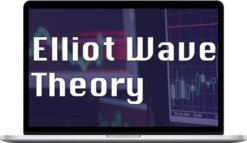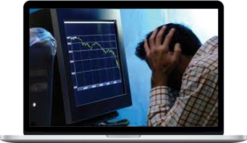Nauzer Balsara – Money Management Strategies For Futures Traders
$997.00 $16.00
Total Sold: 1
»Instant Delivery
Description
Nauzer Balsara – Money Management Strategies For Futures Traders

Distills complex theories for the benefit of the average trader with little or no background in finance or mathematics by offering a wide range of valuable, practical strategies for limiting risk, avoiding catastrophic losses and managing the futures portfolio to maximize profits.
Numerous topics are explored including: why most traders lose at the futures game most of the time; why most mechanical trading systems are apt to fail; the probabilistic approach to trading; how to make stop-loss orders work for, rather than against you; the pros and cons of options versus futures trading; and how to limit risk through diversification.
What You’ll Learn In Money Management Strategies For Futures Traders?
- Understanding the Money Management Process.
- The Dynamics of Ruin.
- Estimating Risk and Reward.
- Limiting Risk Through Diversification.
- Commodity Selection.
- Managing Unrealized Profits and Losses.
- Managing the Bankroll: Controlling Exposure.
- Managing the Bankroll: Allocating Capital.
- The Role of Mechanical Trading Systems.
- Back to the Basics.
- Appendices.
- Index.
About Nauzer Balsara
Chief Consultant at Chicago Algorithm Research, a consulting service for algorithmic Traders
My passion for Technical Trading Indicators and Systems was kindled when I was hired as a Technical Research Analyst at Shearson Lehman Brothers in 1986 where I was first introduced to the ubiquitous Dual and Triple Moving Average Indicator. Given my academic background, I was skeptical that one could generate reliable buy/sell signals just based on two or three moving averages based on the Close price.
I quickly learned that Indicators did have potential to do well over certain time periods when the market was trending. However, the same Moving Averages failed miserably during non-trending periods. Moreover, when the user-defined lag lengths were altered, the results seemed to change dramatically. The parameters that worked well in one time period were not so effective in other time periods. My first task was to “fix” this problem, so that the results were uniformly good across different market conditions.
That was back in 1986. A lot has changed since then, including the introduction of Options on stocks/futures and the symbiosis between trading Options and trading the underlying assets. In graduate school, I was exposed to something called the Put-Call Options Parity Theorem. I now look out for lack of parity in Put-Call Options prices to help gauge the current market bias and decide whether to be a buyer or a seller. I also set dynamic Volatility based Stops using the Implied Volatility given by the Options on the underlying asset.
I have found success using this approach for end-of-day trading systems, and am very curious to see how it works on smaller intraday time frames. However, I do not have access to intraday options data. I also lack the programming resources required to replicate this idea for smaller intraday time frames. As I am simply a thinker with absolutely no programming skills, I will require the services of an expert programmer to implement my ideas.
More courses from the same author: Nauzer Balsara
Delivery Policy
When will I receive my course?
You will receive a link to download your course immediately or within 1 to 21 days. It depends on the product you buy, so please read the short description of the product carefully before making a purchase.
How is my course delivered?
We share courses through Google Drive, so once your order is complete, you'll receive an invitation to view the course in your email.
To avoid any delay in delivery, please provide a Google mail and enter your email address correctly in the Checkout Page.
In case you submit a wrong email address, please contact us to resend the course to the correct email.
How do I check status of my order?
Please log in to TradingAZ account then go to Order Page. You will find all your orders includes number, date, status and total price.
If the status is Processing: Your course is being uploaded. Please be patient and wait for us to complete your order. If your order has multiple courses and one of them has not been updated with the download link, the status of the order is also Processing.
If the status is Completed: Your course is ready for immediate download. Click "VIEW" to view details and download the course.
Where can I find my course?
Once your order is complete, a link to download the course will automatically be sent to your email.
You can also get the download link by logging into your TradingAZ account then going to Downloads Page.
Related products
Total sold: 3










